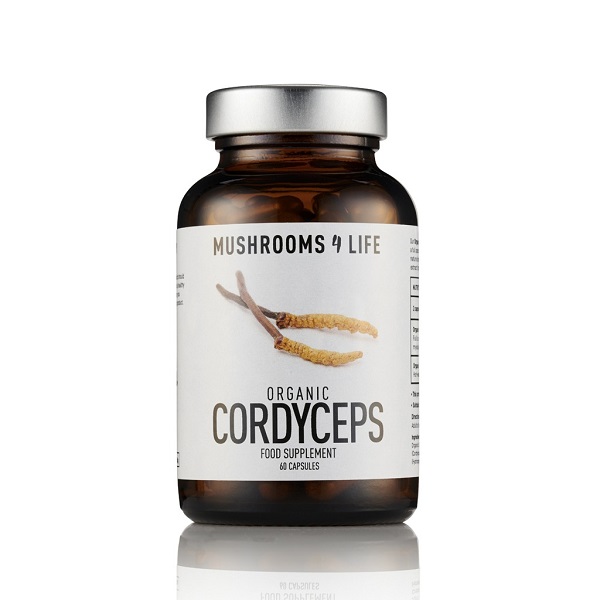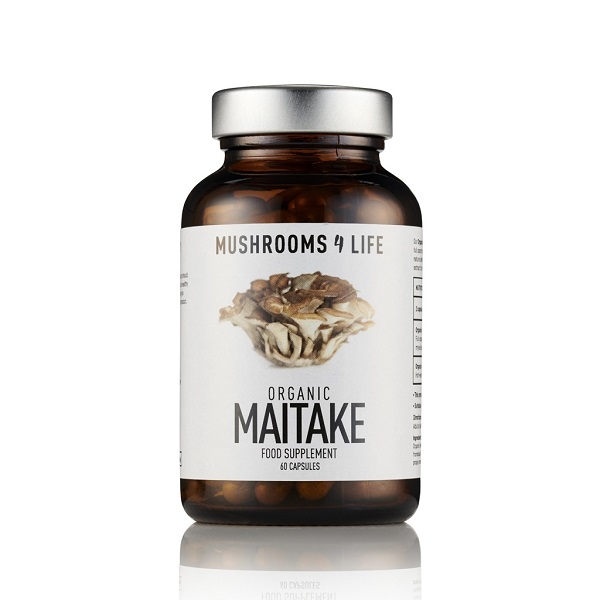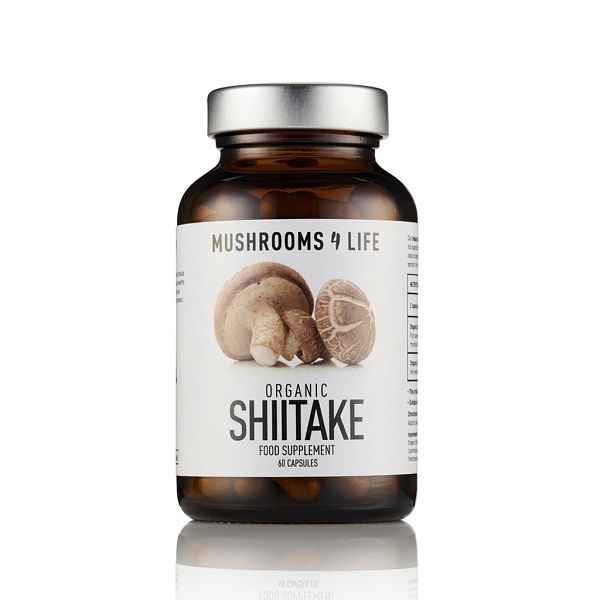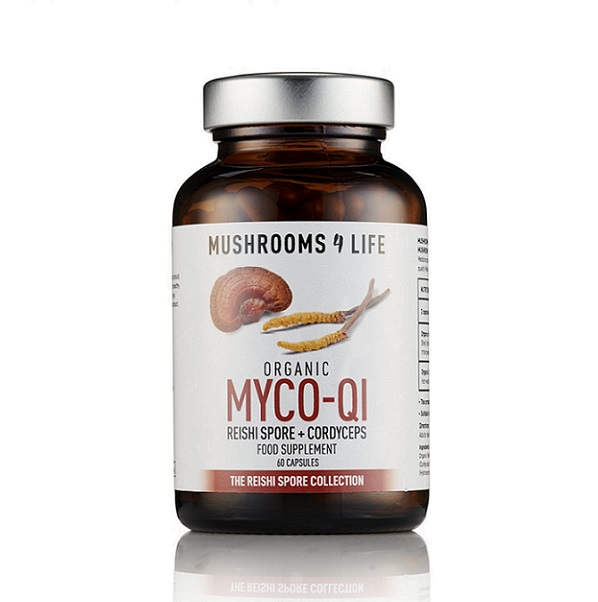Medicinal mushrooms
A medicinal mushroom is a mushroom that contains certain beneficial substances and can therefore be used to promote your health.
There are about 800 types of fungi suitable as medicinal mushrooms. That may seem like a lot, but it is actually only a very small percentage. It is estimated that there are approximately 140.000 different types of fungi, of which 15.000 are now known.
It is therefore whole onwise to pick mushrooms in the forest on your own. A mistake is easily made and the consequences can be very serious.
It is better to buy medicinal mushrooms from a reliable webshop. You can then be sure that you have a good and safe product.
Content
1.1 Why medicinal mushrooms?
1.2 Useful parts of fungus
1.3 History of medicinal mushrooms
1.4 Powder, capsules and extracts
1.5 Cultivation of medicinal mushrooms
1.6 Effect of medicinal mushrooms
1.7 Examples of medicinal mushrooms
1.1 Why medicinal mushrooms
Medicinal mushrooms have a wide range of useful applications. The beneficial effects can differ per mushroom species, but there are also many similarities between different types of medicinal mushrooms.
Common effects of medicinal mushrooms are an improvement of the immune system and an antibacterial effect. In section 1.6 effect of medicinal mushrooms you can read more about the usefulness of medicinal mushrooms.
1.2 Useful parts of fungus
The term medicinal mushrooms should really be medicinal fungi. In biology, the entire organism is called fungus and the term mushroom is only used for the above-ground part. A fungus generally consists of the following parts:
• Mushroom or fungus
• Tracks
• Mycelia
Mushroom
As mentioned, mushroom is only the above-ground part of a fungus. Here are also the 'seeds' of the fungus. That is why one could also call a mushroom the fungus.
spore
The 'seeds' of a fungus are actually called spores. In the case of fungi with a hat, the spores are located between the slats under the hat. At some point the spores come off and the wind carries them along. This is how a fungus propagates.
Mycelium
The underground threads of a fungus are called the mycelium. The mycelium remains intact all year round. This is different from the fungus that emerges in autumn and dies after the spores have been released.
Which part to use?
Some medicinal mushrooms have the greatest concentration of active substances in the fungus, while in others the most active substances are in the mycelium. And sometimes it is precisely the spores of a mushroom that people use.
So when you buy medicinal mushrooms, it is rarely about the whole fungus. Usually it concerns the mycelium or the fungus and sometimes the spores. It just depends on where in the particular fungus species the most active substances are.
1.3 History of medicinal mushrooms
In the Netherlands and the rest of Western Europe, the medicinal potential of mushrooms has fallen into obscurity over the centuries. However, via the detour from the Far East, medicinal mushrooms have returned to the Western world.
Old as the Stone Age
The use of medicinal mushrooms dates back at least to the Stone Age. We know this thanks to Tötzi. That's what scientists called the ice mummy found in the Italian Alps in the late twentieth century.
Tötzi died about 5300 years ago while traveling. He had several things with him, including two fungi: the Real Tinder mushroom (suitable for making fire) and the Birch mushroom. The latter mushroom is known for its antibacterial, anti-parasitic and anti-tumor properties.
Roman time
We know that medicinal mushrooms were also used in the classical world from a number of Latin and Greek texts from this period.
Pliny the Elder (24 - 79 AD) wrote more than 100 books about nature, 37 of which have been preserved. In between there are also a number of texts about medicinal mushrooms. The Greek physician Pedanius Diocorides (ca. 40 - 90 AD) also wrote about medicinal mushrooms.
In the following centuries, knowledge about medicinal mushrooms has largely been lost in the Western world. Fortunately, knowledge about medicinal mushrooms was retained elsewhere in the world.
China
The exact age of Traditional Chinese Medicine (TCM) is not known. Most historians assume that TCM first took shape somewhere between 5.000 and 7.000 years. It is common sense to assume that mushrooms were a part of medicine in China from the very beginning.
What we do know for sure is that a number of mushrooms are also mentioned on the oldest surviving list of medicinal products. This list is called the Shennong Ben Cao. This list was first recorded on paper sometime in the second century BC.
In China, knowledge about medicinal mushrooms has been well preserved over the centuries and has even been expanded. For example, the Taoist physician Tao Hongjing (456-536 AD) wrote an extension of the Shennong Ben Cao.
Modern time
Given the foregoing, it is not surprising that in modern times scientific research into medicinal mushrooms primarily took place in Asian countries. After all, thanks to Traditional Chinese Medicine (TCM), people there were more aware of the medicinal potential of fungi than in the West.
However, in the eighties of the twentieth century, scientific interest in the healing power of mushrooms arose in the rest of the world. Since then, more and more medical research has been carried out into the effect of medicinal mushrooms in Europe and America.
Currently, the US National Library of Medicine (NLM) contains the results of thousands of scientific studies related to medicinal mushrooms.
1.4 Powders, capsules and extracts
In China, tea from medicinal mushrooms is the most traditional method of using medicinal mushrooms. However, nowadays medicinal mushrooms are usually sold in powder form, capsules or extracts. So do not expect complete mushrooms with stem, hat, collar, etc.
Medicinal mushrooms in powder form, capsules, or extracts have a number of advantages:
• More active ingredients
• Higher bioavailability
• Simple dosing
More active ingredients
There are two ways to process medicinal mushrooms into a powder or into capsules: hot water extraction and ethanol extraction.
Hot water extraction mainly ensures a high concentration of polysaccharides. Ethanol extraction actually produces an extract with many triterpenes.
Often both methods are used and the result is then added together. This ensures that as many of all useful substances as possible are in the end product.
Higher bioavailability
Bioavailability is the degree to which a beneficial substance from a food supplement is absorbed by the human body.
The bioavailability of unprocessed medicinal mushrooms is low. This is because in unprocessed fungi the active substances are part of dietary fibers that digest poorly. As a result, many active substances disappear from the body with the stool.
During extraction, the useful substances are separated from the dietary fibers. The result is an end product with a much higher bioavailability.
Simple dosage
Powders and capsules make dosing easier. It will be easier for you to get the right amount of the active ingredients.
Always read the packaging and / or leaflet carefully first. Here you will find more information about the correct dosage.
1.5 Cultivation of medicinal mushrooms
Most medicinal mushrooms that you can buy commercially are grown. This has several important advantages:
Conservation
Fungi play an important role in the ecosystem of nature reserves. Picking one or two mushrooms from the forest won't have that big of an impact, but of course that becomes a different story when it comes to hundreds or even thousands of specimens.
The use of medicinal mushrooms is growing so fast that wild picking would be completely irresponsible. So by growing medicinal mushrooms, nature is saved.
Cost reduction
You can imagine that picking mushrooms in a forest is quite labor intensive.
The cultivation of medicinal mushrooms requires a certain investment, but because the production is much higher, the costs per unit are ultimately much lower than for wild picking.
Purity
A fungus absorbs many substances from the subsoil. This means that a mushroom from the forest may have absorbed substances from the soil that people actually do not want.
During cultivation, the composition of the soil is completely in their own hands. This therefore produces a purer end product.
In addition, the concentration of active substances during cultivation can be influenced by the choice of the substrate. We see this especially reflected in the different forms of cultivation.
Forms of cultivation
For the cultivation of medicinal mushrooms, one of the following three methods is usually used:
• Grain Spawn
• Substrate cultivation
• Liquid fermentation
Grain Spawn
At Grain Spawn, the medicinal mushrooms are grown on a surface of sterilized grain or rice.
With Grain Spawn, the roots (mycelium) of the fungus are often harvested for further processing. That is why this form of cultivation is also called Mycelium on Grain (MOG).
MOG is one of the most cost-effective ways to grow medicinal mushrooms on a large scale. That is why this form of cultivation is common.
There is one major drawback: When grown on grain or rice, some types of fungi contain less active substances. That is why a different form of cultivation is more often used for these types of medicinal mushrooms: substrate cultivation.
Substrate cultivation
In substrate cultivation, artificial soil is used that mimics a natural cycle. We call such an artificially composed soil a substrate.
There are two types of substrates:
• Wood substrate: Wood chips or sawdust with added lime.
• Compost substrate: Fermented fertilizers to which straw, lime and other elements have been added.
Medicinal mushrooms based on substrate cultivation are generally of a high quality.
Liquid fermentation
There is a group of fungi that grow as parasites on caterpillars, insects and arthropods. These are the Cordyceps. Some of them are also suitable as medicinal mushrooms.
Traditional cultivation methods are useless for growing medicinal mushrooms belonging to the Cordyceps family. Fortunately, an alternative method has been found for a subgroup of the Codyceps to grow them under controlled conditions. This group is called the Cordyceps CS-4. And the production method used is called liquid fermentation.
In liquid fermentation, a mixture of water with certain nutrients is first created in a stainless steel tank. Then a little bit of live mycelium from Cordyceps CS-4 is added. The mycelium is then allowed to grow in the mixture for 3 to 8 days while the mixture is kept in motion.
Wild Chaga
Despite the innovation in cultivation, there are still a number of medicinal mushrooms that cannot be cultivated.
The most famous example of this is Chaga. Grown Chaga appears to contain much less active ingredients than Wild Chaga. That is why Chaga is still extracted in the wild. Chaga is not yet an endangered species of fungus, but due to the high demand that seems to be changing.
1.6 Effect of medicinal mushrooms
There are many different medicinal mushrooms and each variety has different useful properties. It is therefore impossible to say that all medicinal mushrooms work well in condition A or B.
If we do have to generalize, then we see the following effects often in different types of medicinal mushrooms:
• strengthens the immune system
• antibacterial
• antiviral
• anti-inflammatory
• cholesterol lowering
• counteracts oxidative stress
• prevents a lack of certain minerals
The above effects are due to medicinal mushrooms due to the active substances in a fungus. Common beneficial substances in medicinal mushrooms are:
• Essential sugars and polysaccharides
• Triterpenes
• Antioxidants
• Essential amino acids
• Minarels and trace elements
Below we take a closer look at these useful substances from medicinal mushrooms.
Essential sugars and polysaccharides
When you think of sugars, you probably think of the sweet stuff you use in the tea or when you bake a whipped cream cake in the first place. However, in chemistry the term 'sugars' means something else.
Sugars are a category of biological substances consisting of series of small carbohydrate molecules (monosaccharides). Now these series can be long and short:
• Monosaccharides = substances with molecular series of 1 monosaccharide (eg grape sugar)
• Disaccharides = substances with molecular series of 2 monosaccharides (eg table sugar)
• Oligosaccharides = substances with molecular series of 3 - 9 monosaccharides
• Polysaccharides = substances with molecular series of 10 or more monosaccharides
Medicinal mushrooms mainly concern those longer series: polysaccharides.
A number of these polysaccharides are considered essential sugars. That 'essential' means two things:
• the body needs these substances to function properly
• the body cannot (or very difficult) produce these substances itself
Many medicinal mushrooms contain the following essential sugars in particular:
• beta-glucan 1.3
• beta-glucan 1.6
Sufficient of these essential sugars help with a strong immune system and can lower cholesterol. In addition, these beta-glucans help with proper regulation of blood sugar levels
Triterpenes
Terpenes are a class of organic molecules made up of isoprene. An isoprene is an organic compound with the chemical formula C5H8.
A subclass of terpenes are triterpenes. These are organic molecules consisting of 6 isoprenes. Because isoprenes can be linked in different structures, different isoprenes also exist.
Common tripenes in medicinal mushrooms are betulin or betulinic acid. These substances have antibacterial, antiviral and anti-inflammatory properties.
Antioxidants
The human body contains substances known as 'free radicals'. These are substances that cause damage to cells and tissues. We call this oxidative stress. Antioxidants counteract this oxidative stress.
Free radicals arise during normal metabolism, but they can also arise during illness, inflammation, stress, intensive sports, air pollution, smoking, sunbathing and alcohol use.
Incidentally, a small amount of free radicals is not bad at all. In fact, they are very useful. White blood bodies use free radicals to kill unwanted bacteria and to clean up damaged proteins in the muscle mass.
So on the one hand, free radicals are useful, but on the other hand, excess free radicals are harmful to the body. Antioxidants can neutralize excess free radicals.
Medicinal mushrooms contain many antioxidants. This mainly concerns the antioxidant glutathione.
Essential amino acids
The human body has 22 different amino acids. These amino acids are necessary for the production of proteins. These proteins are the building materials of the body cells. In addition, amino acids have a lot of influence on our organs, joints, bones and muscles.
The body can make 22 of the listed 13 amino acids that the body needs. The other 9 amino acids must be ingested in a different way. Those are the essential amino acids.
With a normally varied diet it is usually possible to get enough essential amino acids. Otherwise, medicinal mushrooms can serve as a supplement. Medicinal mushrooms contain many high-quality and essential amino acids.
Minerals and trace elements
The human body also needs minerals and trace elements to function properly. The main minerals are calcium, chlorine, phosphorus, potassium, sodium and magnesium. The most important trace elements are chromium, fluoride, iron, iodine, copper, manganese, molybdenum, selenium and zinc.
A shortage of minerals and trace elements can occur with a one-sided diet, long-term or chronic illness and use of medication.
Whatever the reason, using medicinal mushrooms is a good way to make up for the deficiency. Medicinal mushrooms contain many of the mentioned minerals and trace elements.
1.7 Examples of medicinal mushrooms
As mentioned, there are a lot of medicinal mushrooms. That is why we limit ourselves here to a few popular varieties.
Reishi
The Dutch name is Gesteelde lakzwam. Its scientific name is Ganoderma Lucidum. However, the Japanese name Reishi is usually used for this medicinal mushroom.
In Japan, Reishi has been used for centuries for its antibacterial and antiviral properties. In addition, Reishi is rich in antioxidants. Finally, Reishi ensures balance in the hormone system.
In the Netherlands, Reishi is mainly sold as a capsule or tablet. The reason is the bitter taste of Reishi. With a capsule or tablet, the bitter taste is not bothered.
Lion's Mane
The scientific name of Lion's Mane is Hericium Erinaceus. That is why this medicinal mushroom is also widely sold under the name Hericium. This fungus grows in many places in the Northern Hemisphere: North America, Europe and Asia.
The Dutch name of Lion's Mane is wig fungus because the fungus looks like a blond wig. However, the Dutch name is not actually used when selling this medicinal mushroom.
Besides as a medicinal mushroom, this fungus is also widely used as an edible mushroom. In China, for example, Lion's Mane is used as a meat substitute. Many people who have eaten a dish with this mushroom say that the taste is reminiscent of lobster.
Lion's Mane stimulates the brain to produce neuropeptides that ensure the growth, production and maintenance of neurons in the brain.
Cordyceps
Earlier we talked about Cordyceps CS-4. Since Cordyceps CS-4 is produced by liquid fermentation, this medicinal mushroom is relatively inexpensive compared to other Cordyceps.
Cordyceps are fungi that grow as parasites on caterpillars, insects and arthropods. Most Cordyceps can therefore only be collected in the wild. The best known is Cordyceps sinensis. This fungus grows in the caterpillar of a moth species that is common in the Himalayas.
According to Traditional Chinese Medicine, Cordyceps sinensis has many different medicinal properties. As a result, there is a high demand for Cordyceps sinensis. That makes collecting and selling this rare medicinal mushroom a lucrative activity.
For the local population of certain areas in Tibet, the sale of Cordyceps sinensis makes up on average about 40% of their income. Unfortunately, this also regularly leads to conflicts between villagers. And due to high demand, Cordyceps sinensis is also becoming increasingly rare.
Maitake
Its scientific name is Grifola Frondosa. The Dutch name is Eikhaas, but usually the Japanese name Maitake is used.
In Japan, Maitake is used for both medicinal and culinary purposes. Two different variants are used for this.
The edible variety is used as an ingredient for the most delicious dishes. However, it contains few active substances. After all, cultivation here focuses more on taste than on medicinal power.
The medicinal variant contains many active substances. As a medicinal mushroom, Maitake is mainly used for its antiviral and anti-inflammatory properties.
Chaga
The Dutch name is Berkenweerschijnzwam. The scientific one is Inonotus obliquus, but we usually use the Russian name Chaga.
Chaga grows on dying and diseased birch trees. It also occurs in the Netherlands, but not as much as in more northerly areas with many birch forests. Chaga is common in Siberia, Canada and the Scandinavian countries.
Chaga contains a large number of antioxidants. In addition, Chaga is widely used as a vegetable antibiotic.
Unfortunately, cultivated Chaga contains much less active ingredients than Wild Chaga. That is why Chaga is still picked a lot. It is a common fungus, but due to the enormous demand, Chaga is still considered an endangered species.
More information
If you would like to know more about medicinal mushrooms, please do not hesitate to contact us. We are happy to help you.






















